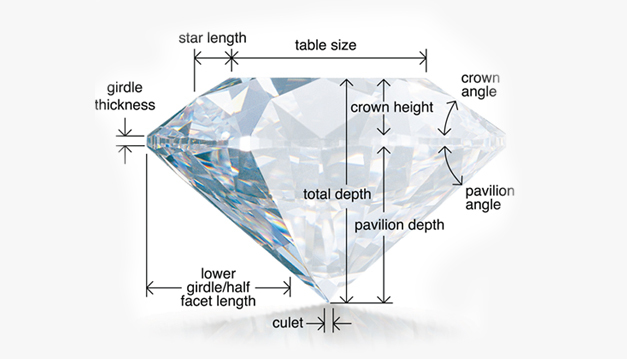Learning about the Diamond Anatomy can help you find the perfect diamond.
While every diamond is unique, all diamonds share certain structural features. A diamond’s anatomy, or its basic structure, determines its proportions, brilliance, dispersion and scintillation. Each part of the diamond has a specific name and having a basic understanding of how each part contributes to the diamond will help you find your perfect diamond. A diamond is comprised of the eight main components. They are Diameter, Table, Crown, Table Spread, Girdle, Pavilion, Depth, and Culet. Below is a brief description of each part of a diamond and its location.
Diameter: The width of a polished stone, measured from edge to edge.
Table: The largest polished facet located on the top of the diamond.
Crown: The top part of a diamond extending from the table to the girdle. The crown is made up of bezel facets (crown mains), star facets, upper girdle facets (upper halves), and a table facet.
Girdle: The very edge (widest edge) of the diamond where the crown and pavilion meet.
Pavilion: The bottom part of a diamond extending from the girdle down to the culet.
Depth: The total height of a diamond measured from the table to the culet.
Culet: The small or pointed facet at the very bottom of the diamond.

Before purchasing a diamond, make sure that you have a basic understanding of a diamond’s anatomy. This will allow you to truly appreciate diamonds and all their intricacies, communicate with experts about a diamond, and, most importantly, it will assist you in making a well-thought out decision about which diamond is best for you.